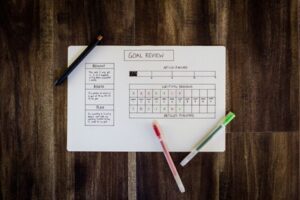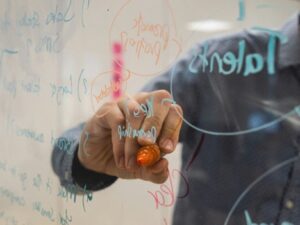Distinguishing Between Learning and Job Seeking: Are You Stuck in the Wage Slave Cycle?
Written By: Gerald O’Dwyer the PE Guru
The process of learning skills can be described as a multi-dimensional and dynamic journey that involves acquiring, practicing, refining, and eventually mastering new abilities. This process can vary in complexity and duration depending on the nature of the skill, the individual’s background, and their approach to learning. Here’s a comprehensive description of the process:

Awareness and Motivation: The first step in learning a new skill is becoming aware of its existence and understanding its potential benefits. This awareness often stems from curiosity, personal interests, career goals, or a desire for self-improvement. This initial motivation provides the drive needed to embark on the learning journey.
Setting Clear Goals: Defining specific goals helps create a roadmap for learning. These goals can be short-term (mastering a basic technique) or long-term (becoming an expert in the skill). Setting achievable milestones along the way provides a sense of direction and accomplishment.

Gathering Information: Research and information gathering play a crucial role in skill acquisition. This involves reading books, watching videos, attending classes, seeking guidance from experts, and utilizing online resources. Building a foundation of knowledge provides the theoretical framework for practical application.
Practice and Application: Practical application is the heart of skill development. This phase involves hands-on practice, experimentation, and trial-and-error. Repeatedly performing the skill helps build muscle memory, cognitive connections, and familiarity with different aspects of the skill.
Feedback and Evaluation: Regular feedback, either from self-assessment or from mentors, peers, or instructors, is vital for improvement. Constructive criticism highlights areas that need refinement and helps individuals make necessary adjustments to their approach.

Iterative Learning: Learning a skill is seldom a linear process. Individuals often go through cycles of learning, practicing, receiving feedback, and adjusting. Each cycle builds upon the previous one, gradually refining the skill.
Patience and Persistence: Skill acquisition requires patience and persistence. Progress may not always be linear, and there may be setbacks or plateaus. Maintaining a positive mindset and continuing to invest time and effort are crucial to overcoming challenges.
Adaptation and Innovation: As individuals become more proficient in a skill, they start to adapt and innovate. They explore variations, experiment with creative approaches, and adapt the skill to different contexts or challenges. This level of mastery allows for a deeper understanding and personalization of the skill.

Expertise and Mastery: True expertise and mastery come from extensive practice and a deep understanding of the skill. At this stage, the skill becomes second nature, and individuals can perform complex tasks with ease and finesse. Mastery often involves contributing to the field by sharing knowledge and mentoring others.
Continuous Learning: Learning a skill doesn’t stop at mastery. Skills can evolve, and staying up to date with the latest advancements, techniques, and trends is essential for maintaining proficiency. Continuous learning ensures that the acquired skill remains relevant and valuable.

In summary, learning skills is a dynamic process that involves motivation, goal setting, information gathering, practice, feedback, adaptation, and persistence. It’s a journey that transforms novices into proficient practitioners and, for some, into experts who contribute to their chosen field.

